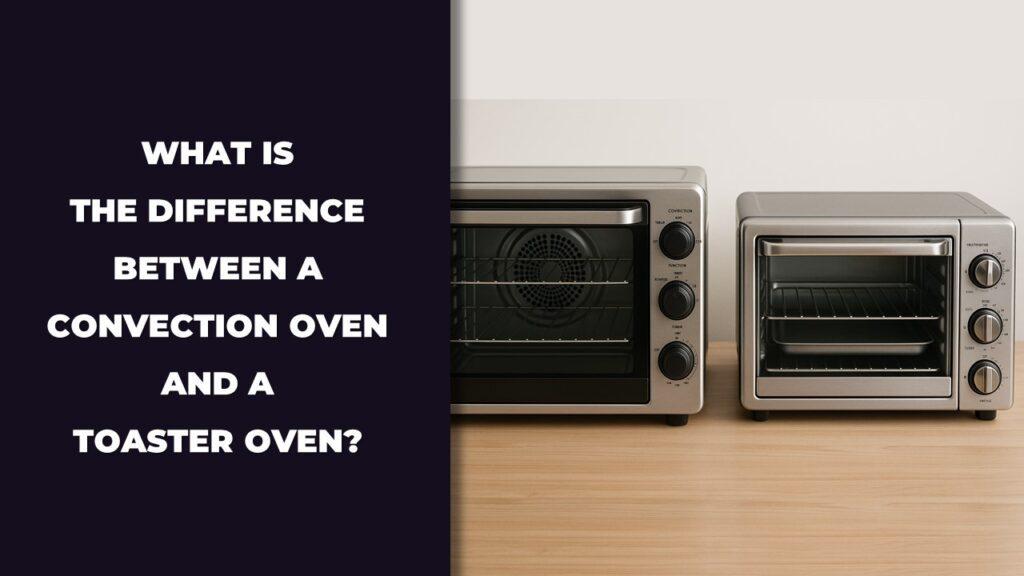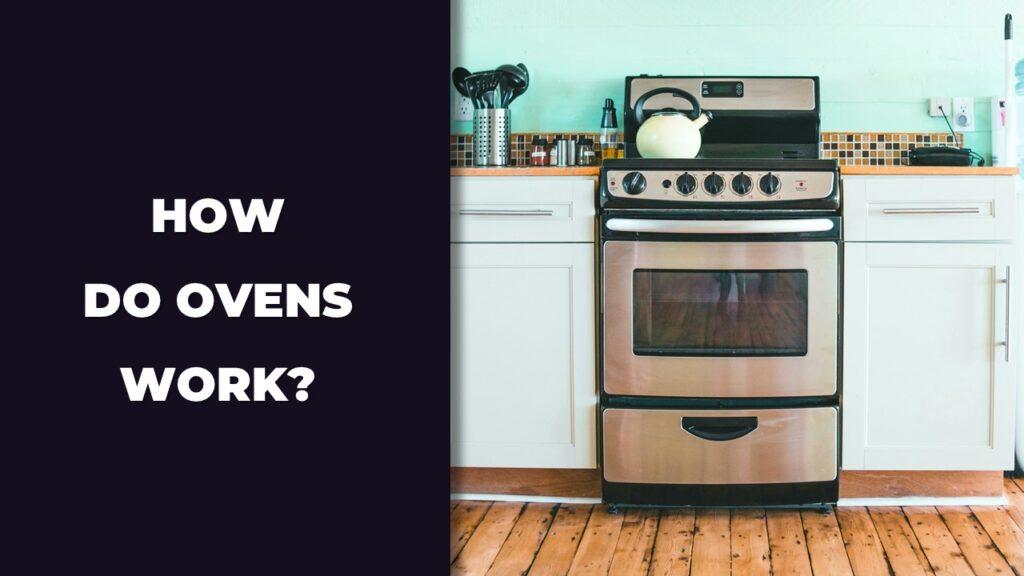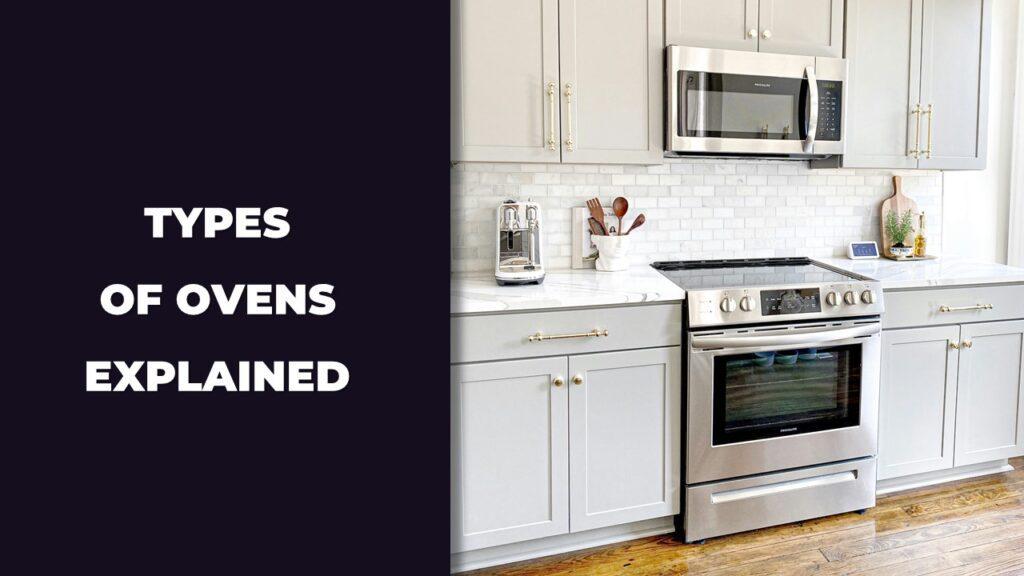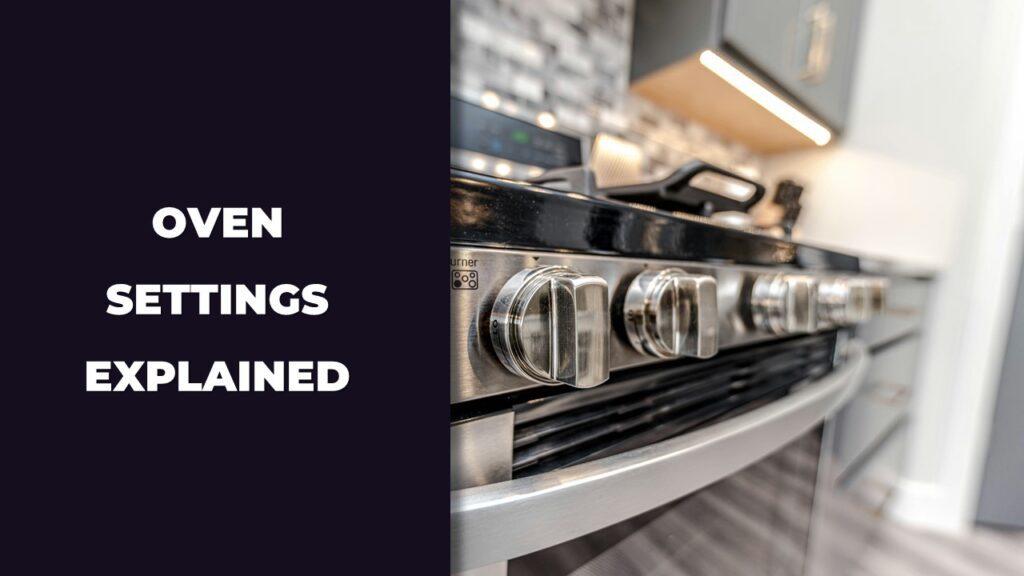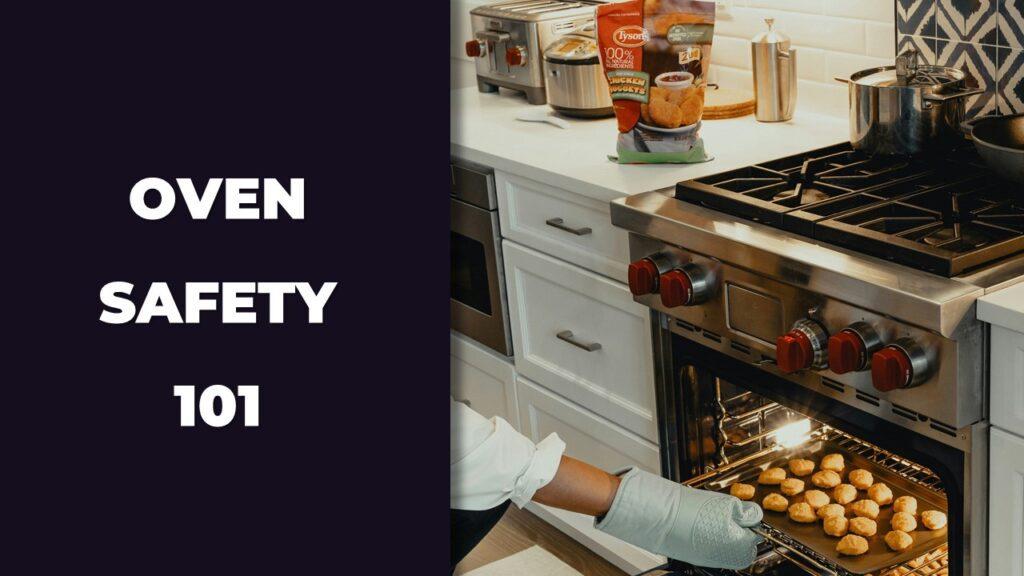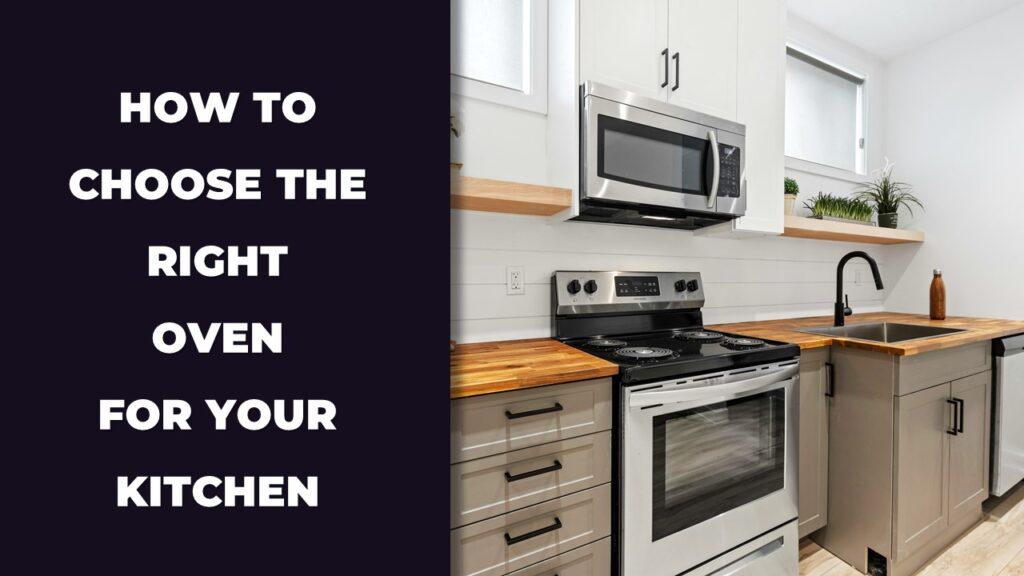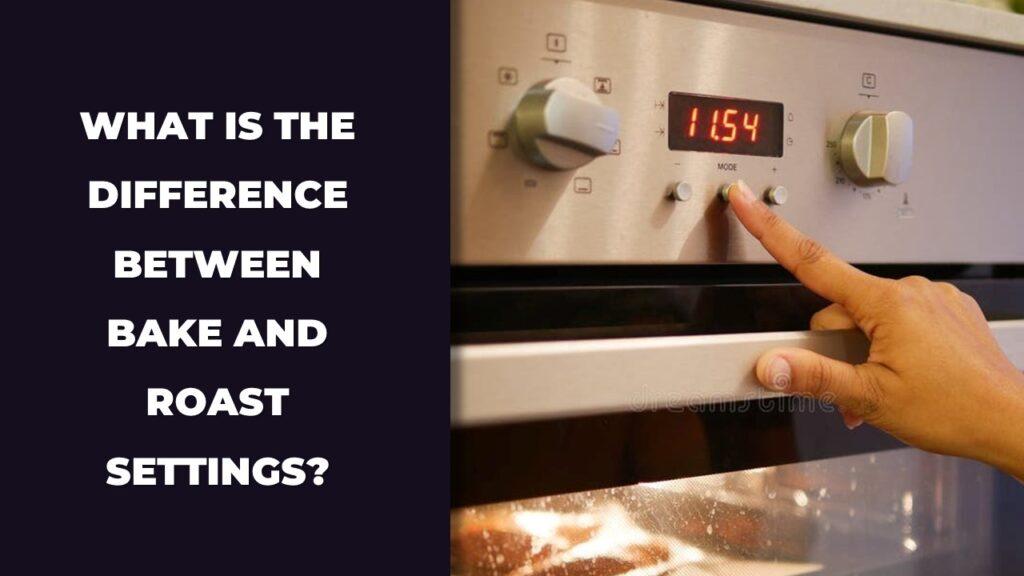
The main difference between bake and roast settings is the temperature and the type of food being cooked. Baking usually uses lower heat, around 325 to 375 degrees Fahrenheit, and is ideal for softer foods like cakes, cookies, and casseroles. Roasting uses higher heat, often 400 degrees or more, and works best for firm foods like meats and vegetables that need a crispy outside and a tender inside.
In this article, we’re going to walk through how each setting works, when to use one over the other, what kinds of dishes suit each method, and a few tips to help you get better results. We’ll keep it practical, easy to understand, and helpful—just like a chat with a friend who cooks a lot.
Understanding the Basics of Bake and Roast Modes
Baking and roasting are both dry heat cooking methods that use hot air inside the oven. The main difference is in the temperature and the kind of food being cooked. Baking usually happens at lower temperatures and is used for softer foods, while roasting involves higher heat and works better for firmer items like meats and vegetables.
To really understand why these settings exist, it’s helpful to look at how dry heat cooking works and how your oven treats each setting behind the scenes.
Dry Heat Cooking Explained
Dry heat means the food cooks without direct moisture or steam. The oven’s hot air surrounds the food and gradually cooks it from the outside in. This method allows for even cooking, browning, and texture changes.
Unlike steaming, which adds water, or broiling, which uses direct top heat, baking and roasting use all-around hot air. It’s this gentle air flow that allows a cake to rise or a chicken to get a crisp skin without burning too fast.
The food doesn’t sit in liquid, and there’s no lid trapping steam unless you cover the dish. That’s what separates dry heat methods from wet heat ones.
Common Oven Settings and How They Work
Most ovens have a separate “bake” and “roast” button. While both heat the oven with dry air, they may use different heating elements or fan settings.
- Bake mode usually turns on the bottom heating element, warming the oven gently from below. It’s made for consistent, even cooking.
- Roast mode often uses both top and bottom heating elements or adjusts how the fan moves the hot air. Some ovens also use stronger top heat to help brown the surface.
- If you have a convection oven, the fan kicks in to push air around, cooking food faster and more evenly in both modes.
Depending on the model, your oven might treat both settings almost the same—or make slight changes to air flow or heat direction.
What Is Baking?
Baking is a cooking method that uses steady, moderate heat to gently cook foods that start soft or liquid, like batter or dough. It’s best for dishes where you want an even finish and a tender interior.
Baking usually happens between 300°F and 375°F. This range allows the food to rise, set, and cook evenly without drying out or browning too quickly. It’s the go-to for foods like bread, cookies, cakes, and casseroles.
What makes baking unique is the transformation. Liquids become solid, doughs puff up, and crusts form slowly. You’re not just heating the food—you’re changing its structure.
This setting works well with covered dishes too, like lasagna or baked pasta, where moisture needs to stay in. It’s about balance—gentle heat, consistent results, and that classic “baked” texture people love.
What Is Roasting?
Roasting uses higher, often more direct heat to cook firm foods like meats and vegetables. It’s designed to create a crispy, browned outside while keeping the inside juicy and tender.
Roasting usually takes place at 400°F or above. This higher temperature helps draw out moisture from the surface of the food, allowing it to brown, caramelize, and form a flavorful crust. It’s the reason roast potatoes have that golden crunch or roast chicken gets a crispy skin.
Unlike baking, roasting often works best uncovered. The dry air can reach the food directly, which is key to browning. If you cover the dish, it traps steam and starts to behave more like baking.
Slow roasting is another method where you might begin with high heat to sear the outside, then lower the temperature to finish cooking. This is common for large cuts of meat that need time to break down without drying out.
Bake vs. Roast: Key Differences
Baking and roasting both use dry heat, but they differ in temperature, food type, and final texture. Baking happens at lower temperatures, usually 375°F or below, and is ideal for softer foods like cakes and casseroles. Roasting uses higher temperatures, around 400°F or more, and works best for firm foods like meat and vegetables that need browning.
Although both settings may feel similar, their small differences can really change the outcome of your dish. Here’s a quick breakdown to help you compare them side by side.
| Feature | Bake | Roast |
| Temperature | Lower (≤375°F) | Higher (≥400°F) |
| Ideal For | Doughs, batters, soft items | Meats, vegetables, firm foods |
| Texture Outcome | Even, soft, consistent | Crispy, browned, caramelized |
| Pan Types Used | Baking dish, sheet pans | Roasting pans with low sides |
| Covered or Not | Can be covered (casseroles) | Typically uncovered |
While both methods work with dry heat and similar oven tools, knowing when to bake or roast can make a big difference in how your food turns out—whether you want soft and moist or crispy and bold.
When to Use Bake vs. Roast (Decision Guide)
Choose baking when you’re working with soft or wet foods that need to firm up gently. Use roasting for firmer foods that benefit from browning and a crisp texture. The right choice depends on the food’s structure and the result you want.
Sometimes it’s not about following the recipe to the letter—it’s about knowing what you’re cooking and what you want it to taste and feel like. Here’s how to decide based on structure and outcome.
Choosing Based on Food Structure
Soft or liquid-based foods are better suited for baking. These include items like cake batter, cookie dough, or casserole mixtures. They need time to set and rise slowly without forming a crust too soon.
On the other hand, structured or firm foods like carrots, chicken, or potatoes are perfect for roasting. They hold their shape and can take the higher heat that brings out crisp edges and deep flavors.
Choosing Based on Desired Outcome
If you’re aiming for a crispy texture, rich browning, or caramelized edges, roasting is the way to go. That high heat draws out moisture and helps the surface crisp up while locking in flavor.
But if you’re going for even, moist cooking and a soft finish—like a tender cake or a gooey lasagna—baking gives you the gentle heat needed to cook everything through without drying it out.
Matching the right method to your goal makes the biggest difference between a dry dinner and a perfectly cooked one.
How Convection Settings Impact Baking and Roasting
Convection settings use a fan to circulate hot air inside the oven, which helps food cook more evenly and often faster. This airflow reduces hot spots, improves browning, and is helpful for both baking and roasting when used the right way.
While convection may sound like just a fancy oven feature, it can actually change how your food turns out. Here’s how it works in both baking and roasting modes.
What Is Convection Bake?
Convection bake uses the fan to move warm air evenly around the oven. This consistent airflow helps baked goods rise better and cook more uniformly.
- Works well for cookies, cakes, muffins, and pies.
- Helps prevent uneven browning or undercooked centers.
- Best when using multiple trays at once since heat spreads more evenly.
If your baked goods brown too quickly, try lowering the recipe temperature by 25°F when using convection.
What Is Convection Roast?
Convection roast adds fan movement to higher heat, helping crisp up the outside of foods faster without drying out the inside.
- Great for whole chickens, turkey, pork, or root vegetables.
- Speeds up browning for better texture and flavor.
- Helps caramelize the surface while keeping moisture inside.
This setting gives you that nice roasted crust without the long cook times, especially when dealing with thick cuts or full trays of vegetables.
Common Misconceptions About Bake and Roast
Baking and roasting often get used interchangeably, but there are small differences that matter. The confusion usually comes from temperature overlap, food variety, and how ovens label their settings.
It’s easy to mix them up, so let’s clear up a few common misunderstandings:
- They’re the same thing: Not quite. They use similar dry heat, but baking uses lower heat for softer foods, while roasting uses higher heat for crispier results.
- Roasting always needs high heat: Not true. You can slow roast at lower temperatures too. It’s more about the goal than the number on the dial.
- You can’t bake meats or roast baked goods: You technically can. It’s about the method and temperature. Fish can be baked at high heat, and some vegetables can be roasted low and slow.
- The oven setting doesn’t matter: Some ovens adjust fan use or heating elements depending on the setting, so it’s worth paying attention.
- Only certain pans work: You can use most oven-safe cookware for both methods. The shape and material just affect how heat hits the food.
Understanding these subtle differences helps you choose the right setting without second-guessing yourself every time.
Tips for Better Results Using Bake or Roast Settings
To get the best results when baking or roasting, it’s important to control your oven temperature, use the right cookware, and pay attention to airflow. A few small tweaks can make a big difference in how your food turns out.
Even if your oven has smart features or presets, good cooking still depends on some hands-on habits. Here are a few practical tips to help your food come out just right:
- Always preheat the oven: Putting food into a cold oven changes cook time and texture. Let it reach the target temperature before you begin.
- Use the correct rack position: The middle rack works for most baking. For roasting, use the lower or top rack depending on the size and type of food.
- Pick the right pan: Shallow roasting pans encourage browning. Glass or metal baking dishes each hold and distribute heat differently.
- Avoid overcrowding: Space allows hot air to flow. Packed pans can trap moisture, making food steam instead of roast.
- Use a thermometer: Especially for meats or baked goods, this helps avoid undercooking or drying things out.
- Rotate trays halfway through: For more even results, especially in ovens without convection.
These little habits don’t take much time but can improve your cooking results every day.
Final Thoughts
Baking and roasting may use the same oven, but they’re designed for different goals. Baking works best for softer, structured foods that need time and gentle heat to rise or set. Roasting thrives on high heat, crisping up the outside while locking in flavor on the inside.
Knowing which method suits what you’re cooking helps you get better results without guessing. It also keeps your food from drying out, burning, or coming out uneven. And once you understand how temperature, texture, and oven mode work together, you’ll feel more confident trying different recipes.
So whether you’re tossing in a tray of muffins or prepping a whole chicken, your oven’s bake and roast settings are more than just labels. They’re tools for getting the texture, taste, and finish you want—without stress.
Related FAQs
Can I Roast On Bake Setting?
Yes, but temperature and air movement matter more than the label. As long as the oven is hot enough, you can roast on bake mode.
Why Does My Oven Have Both Settings If They’re Similar?
The oven may tweak fan speed, heat direction, or which elements turn on. These small changes help tailor results based on what you’re cooking.
Can I Bake Vegetables Instead Of Roasting Them?
Yes, but they may not brown or crisp as well. Roasting creates that golden, crunchy edge that baking at lower temperatures might not.
Is Convection Better For Baking Or Roasting?
Convection helps both. It speeds up browning and promotes even cooking, but it’s especially useful for roasting foods you want crispy.

At our core, we’re a group of passionate households and gardening tools and appliances users and enthusiasts. We dive deep into the world of tech, especially when it’s about your household or gardening electric items. We try to provide as much value to the readers with our information and how to blog articles as possible. For affiliate articles our honest and transparent reviews of essential tech products are rooted in real-world experience. We take great satisfaction in offering unbiased evaluations, ensuring that you can make informed decisions when investing in your desired techs.

